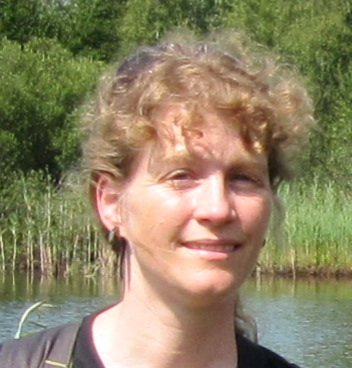
Navigation auf uzh.ch
Navigation auf uzh.ch

My general research interests focus on speciation, hybridization and plant reproductive biology using the genus Primula L. (Primulaceae) as model system (projects with Professor Elena Conti). Approximately 90% of the ca. 420 species of Primula are distylous. In distylous species, anthers and stigmas are positioned reciprocal to each other in two flower morphs (reciprocal herkogamy). In addition, distylous species are often characterized by a sporophytic incompatibility system that reduces self- and intra-morph pollen germination and pollen tube growth, so that only pollen movement between flowers of the two morphs (i.e., transfer of compatible pollen between reciprocal flowers) will result in optimal seed set, while pollen deposition within the same flower or between flowers of the same morph (i.e., transfer of incompatible pollen) will yield little or no seed.
I address the broad question: ‘Why does hybridization sometimes lead to speciation and other times not?’ Hybridization might be prevented by reproductive barriers. Thus, reproductive isolation is a crucial factor in speciation, as it increases the genetic distinctness of diverging lineages. Reproductive isolation can be divided into premating, postmating prezygotic and postzygotic reproductive isolation. In Primula, natural hybridization (i.e., homoploid and polyploid hybridization) plays an important evolutionary role. We study pollen transfer dynamics (ethological and mechanical isolation) and incompatibility reactions (postmating isolation) between distylous primrose species (collaboration with Professor James D. Thomson, University of Toronto, Canada). Pollen transfer dynamics between floral morphs of distylous species are complex and have not been studied comprehensively in primroses to date. In order to understand pollen transfer dynamics between species, within species dynamics have to be understood first. For that reason we studied also pollen transfer dynamics within P. elatior and P. vulgaris. We carried out an integrated study combining experimental work (flight-cage experiments and hand-pollination experiments) and morphological analyses of flowers and bees. In collaboration with Dr. Ben Haller (Cornell University, USA) we further developed an individual based model to study the role of heterostyly in pollinator-driven speciation, thus complementing results from experimental studies. In current projects we will generate a genetic map for P. veris to improve the genome draft of P. veris, reconstruct the evolutionary history of section Primula, and study ancient and contemporary introgression employing a combination of phylogenomic and population genomic approaches using next generation sequencing data.
I address the question: ‘How does variation in anther-stigma separation influence plant reproductive biology‘. We studied the effect of variation in anther-stigma separation on intra- vs. inter-morph pollination (disassortative pollination) and self-pollination in the self/intramorph incompatible distylous P. elatior and P. vulgaris (collaboration with Professor James D. Thomson, University of Toronto, Canada; see above). Self/intramorph incompatibility, however, can be weak or absent in some primrose species, so that they can self (e.g., homostylous primroses). Selfing, however, is often associated with inbreeding depression, which tends to decrease offspring fitness. But, the evolution of self-compatibility also provides reproductive assurance when pollinators are scarce or absent. Therefore, self-compatibility is a common adaptation to unreliable pollinator services, as for instance found in high alpine habitats or isolated habitats in the desert. We studied genetic diversity in the last four extant populations of the highly endangered self-compatible Sinai Primrose (P. boveana) and raised plants from seeds collected in the wild (collaboration with Dr. Hassan Mansour, Suez Canal University, Egypt). To assess the potential for reproductive assurance in P. boveana we are measuring developmental variation in anther-stigma separation and quantifying seed-set after autonomous selfing. Furthermore, we performed hand-pollination experiments to quantify strength of inbreeding and/or outbreeding depression.
2002-2006, Ph. D. thesis at the Department of Aquatic Ecology, Eawag/ETH Zürich, Switzerland, under supervision of PD Dr. Piet Spaak, Zürich “Extent of hybridization and reproductive isolation in Daphnia”
1999, Diploma thesis at the Swiss Federal Institute of Technology Zürich, Switzerland (ETH Zürich/Eawag), under supervision of Prof. James V. Ward and Dr. Klement Tockner “Struktur und Zoobenthosdiversität von zwei Schwemmebenen im Oberlauf des Tagliamento-Flusses im Friaul (Italien)”
1995-2000, Study of ‘Systematische und ökologische Biologie’ (systematic and ecological biology) at the Swiss Federal Institute of Technology Zürich (ETH Zürich)
2007-present, Scientific assistant (i.e., post-doctoral researcher in Prof. Conti’s group and manager of the Molecular Lab) at the Department of Systematic and Evolutionary Botany (University of Zürich, Switzerland)
2011 Jan-2017 Feb, Assistant of the director of the Department of Systematic and Evolutionary Botany (University of Zürich, Switzerland)
2006-07, Post-doctoral researcher and teaching assistance at the Department of Aquatic Ecology of the Swiss Federal Institute of Aquatic Science and Technology (Eawag/ETH Zürich, Switzerland)
1999-06, Research assistant and teaching assistant at the Department of Aquatic Ecology of the Swiss Federal Institute of Aquatic Science and Technology (Eawag/ETH Zürich, Switzerland)
Haller, B. C., J. M. de Vos, B. Keller, A. P. Hendry, and E. Conti. 2014. A tale of two morphs: modeling pollen transfer, magic traits, and reproductive isolation in parapatry. PLOS ONE 9:e106512.